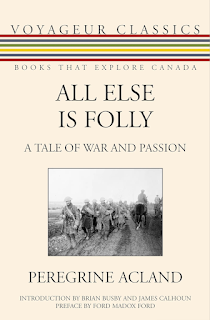
Of those I've read, the New York Times review is both the most unreliable and the most informative. The unreliable being limited to this paragraph:
To those who read the story there was something appealing in the simple, childish sweetness of the little maid Yuki, who, betrothed to a powerful man of her own people, weds instead the youthful and impetuous wooer from over the seas. In the dramatic version something of this same quality is reserved to the character of Yuki, and her love affair, Yuki's subsequent suffering, and her determination to leave the world and become a priestess in the temple that the man she loved may be spared suffering and persecution from her enemies and his, is likely to make an appeal to unsophisticated and sympathetic playgoers.
 |
| Illinois native Margaret Illington (née Young), who portrayed Yuki. |
William Young, who made the adaptation for stage purposes, has used a familiar bag of tricks. The expedients utilized for stage climaxes are of the most ordinary and commonplace kind. One has at least the right to expect some ingenuity in matters of this sort, and here the dramatizer has failed signally.For example. The ultimate conflict in this play is due to the fact that Jack Bigelow, a young American, has married Yuki, the Japanese Nightingale. A record of the marriage has been filed with the United States Consul at Tokio. Bigelow's enemies kill the Consul and steal the book containing the record of the marriage. At the very time that Bigelow hears of the murder of the Consul he gives Yuki their marriage license, telling her never to part with it. Immediately thereafter she places it in a little box, the arch conspirator enters, she shows it to him, and he purloins it. When, a little later, Yuki's brother appears on the scene and refuses to believe that Bigelow has married the girl regularly, the box is opened for the proof that is to convince him. Lo! the paper is gone. Tableau and mutterings of vengeance.And so it goes throughout. Mr. Harker of California, who, with the assistance of Mr. Bobby Newcome, Ensign, U.S.A., eventually sets everything right, shows his daughter a revolver. She takes it from him and puts it in the drawer of a table. Later Mr. Harker tells the villain that he is going to detain him for a little confidential chat, and the pair sit down on opposite sides of the table. The Jap draws a knife and Harker whips out the gun and covers him. Another tableau that flashes in the pan.
- a record of marriage;
- a United States Consul;
- a murder;
- a marriage license;
- a theft;
- a man named Harker;
- a United States ensign named Newcome;
- a daughter of a United States ensign named Newcome;
- a knife;
- a gun.
"Written by William Long from the book by Onoto Watanna" – so says the poster – it was the work Ouida Bergère and Jules Furthman. The latter is known for Shanghai Express (1932), Blonde Venus (1932), Mutiny on the Bounty (1935), Only Angels Have Wings (1939), To Have and Have Not (1944), The Big Sleep (1946), Nightmare Alley (1947), and Rio Bravo (1959), while the former is remembered for, well, her forty-one year marriage to Basil Rathbone.
 |
| The Winnipeg Tribune, 28 December 1918 |
Yuki is a little Japanese girl of good family whom a heartless stepmother wishes to marry to a vicious old man of wealth and position. So Yuki runs away and becomes a Geisha girl and here meets a young American who falls in love with her. When an agent of the would-be bridegroom seeks to spirit Yuki away the American whose name is John Bigelow, takes things into his own hands and marries her. Thenthere are plots and counterplots. The consul, who has charge of the marriage records, is murdered and the records disappear, worthless papers being substituted. And at this time Yuki’s brother, who turns out to have been a friend of Bigelow’s at an American university, returns home and is made to believe that his erstwhile friend has wronged the girl. To save her husband from her brother’s vengeance Yuki flies to a temple, where she prepares to marry the old man of her mother’s choice. But the wedding records turn in the nick of time, and the brother is reconciled to the marriage.The critic goes on to add: "Miss Ward, while she does not make up to look like a Japanese girl, is of a beauty sufficiently delicate and flowerlike to fit appropriately into the miniature gardens and cherry groves through which she wanders."





































.jpg)




















